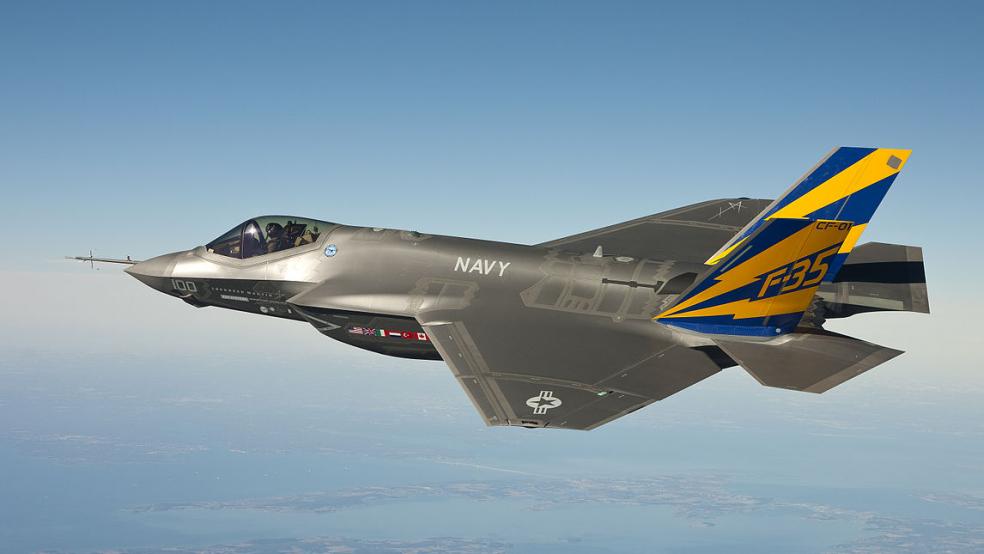Two years ago, the U.S. Defense Department was preparing to debut the F-35 Joint Strike Fighter at a pair of major international air shows when an engine fire aboard a single aircraft in Florida prompted the agency to ground its entire jet fleet.
The engine’s manufacturer, Pratt & Whitney, redesigned the part that led to the blaze and the Pentagon in recent months has been champing at the bit for a do-over at the Royal International Air Tattoo and Farnborough air shows in July.
Related: The 10 Most Expensive Weapons in the Pentagon’s Arsenal
However, a new Pentagon report suggests says there are still “recurring manufacturing quality issues” with the plane’s engines, according to Bloomberg.
Defects in “turbine blades and electronic control systems resulted in maintenance activity to remove suspect hardware from the operational fleet,” the report states. There were five engine quality incidents in August 2015.
It’s unlikely that the new assessment will threaten the F-35’s summertime coming-out party, though. Pratt & Whitney says it “has taken action to improve quality surveillance within their manufacturing processes” and manufacturing quality experts at the Pentagon have ensured fixes are in place as production of the aircraft, which has already cost the U.S. around $400 billion to develop, ramps up.
However, news of the acquisition report has to put some of the fighter’s supporters on edge, especially as the military branches are hoping to show off their fighters. Defense News reports that the Marine Corps is considering demonstrating a vertical takeoff with its version of the F-35 at airshows this summer.
Related: Another F-35 Glitch Requires Restarting the Radar System – in Flight
The Pentagon plans to spend roughly $49 billion to buy 2,457 engines for the Lockheed Martin-manufactured aircraft. Congress has approved $6.7 billion to date for the engine and the Defense Department wants to purchase 63 more engines next year, climbing to 105 annually by 2021.
A spokesman for Pratt & Whitney told Bloomberg that the company is investing in new production procedures and that the reliability of installed engines is exceeding 90 percent.
Should another engine incident occur, before the air shows or beyond, it would no doubt create yet more delays for the F-35 program, which is already years behind schedule. But the effort has become “too big to fail” in the opinion of the Pentagon, defense industry executives and Capitol Hill lawmakers, and will almost certainly continue, whatever the cost.





